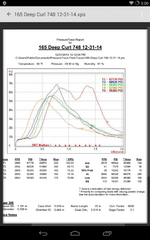Bronze Lifetime
- Messages
- 478
- Reactions
- 319
Is there anything wrong with this powder? In my Speer #14 reloading manual it's listed in a lot of loads between .223 and 45-70. I realize it might be a little hard to meter due to being flaked. I've only used it in 308 but it's been very consistent.
I'm new to rifle reloading but this was the only powder I could get hold of. I'm also about ready to pull the trigger on a progressive LNL so I'm interested how well it would work on 308 in that press.
I'm new to rifle reloading but this was the only powder I could get hold of. I'm also about ready to pull the trigger on a progressive LNL so I'm interested how well it would work on 308 in that press.













